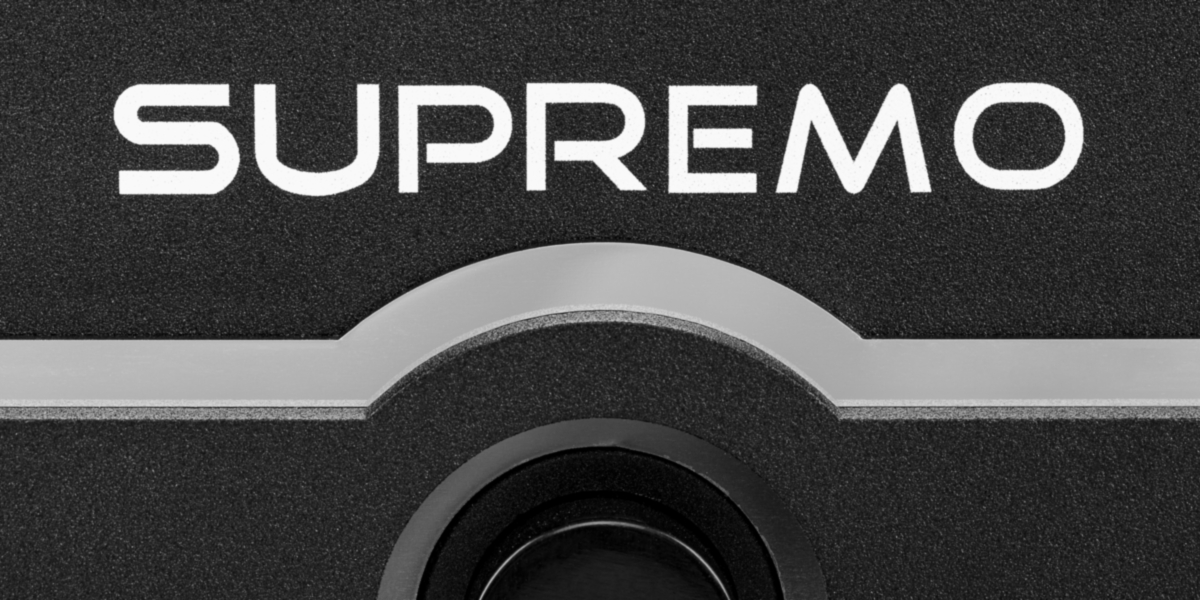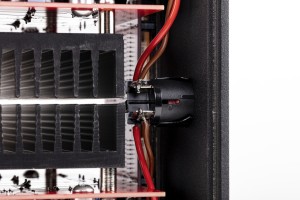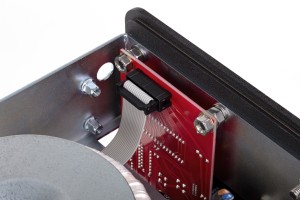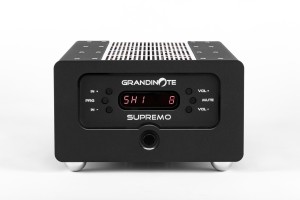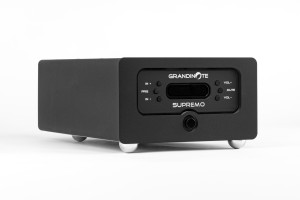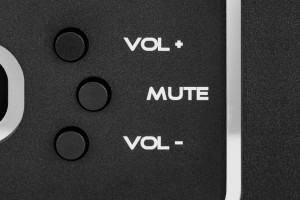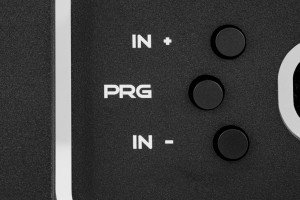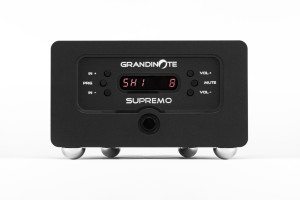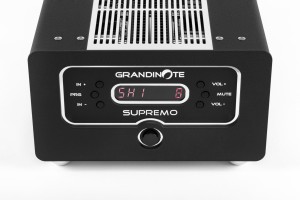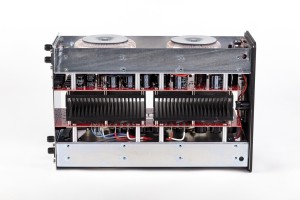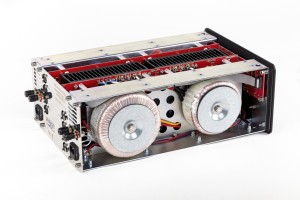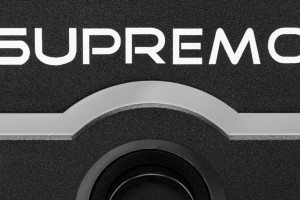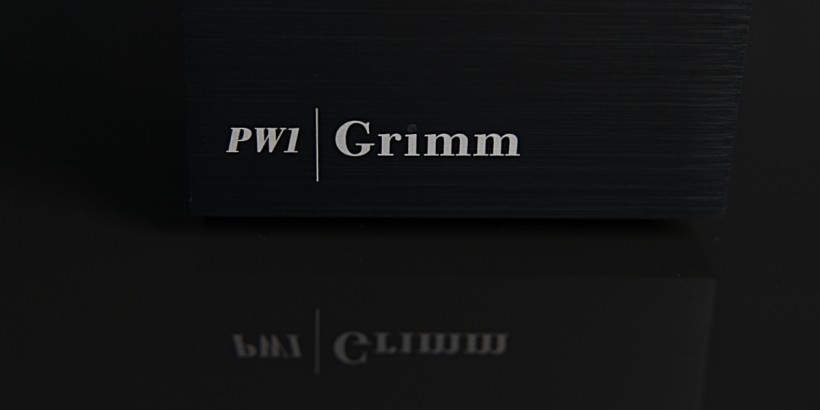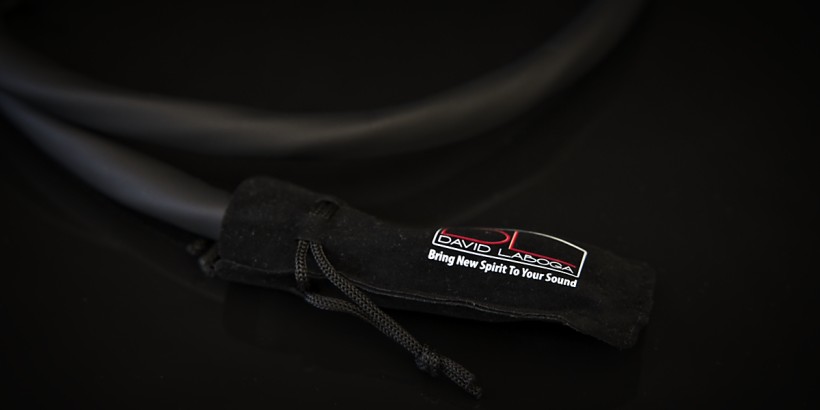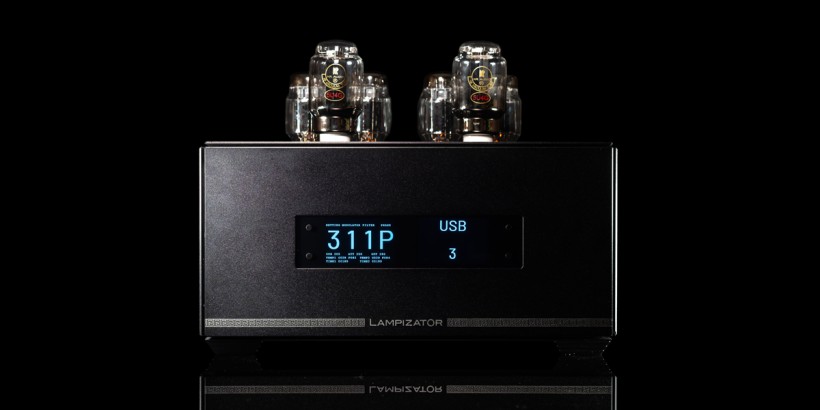As a long-time time highly satisfied owner of the excellent Shinai Class A integrated amplifier, I have been wondering what would even more expensive model from the Italian brand sound like. Finally, the top one-box integrated from Max Magri landed in my room, so let’s find out together how good GrandiNote Supremo really is.
Introduction
It so happens that Max and I are almost the same age. Maybe that is why when we met years ago something clicked and we got along great despite some minor language barrier. Or maybe it was our shared love for tubes that did the trick, because while you may not realize it based on GrandiNote’s lineup, Max, same as me, loves tubes, or to be exact, tube sound. He is an engineer with a university degree in electronics, and he designed and built his first amplifier even before he graduated. A tube amplifier, to be clear.
Many audio designers started their audio adventure in this way, but Max had to do everything his way right from the start. He quickly learned that the sound quality of any tube amplifier highly depends on the quality of output transformers. And so, even for this very first design, he also developed and built his own transformers. As he says, that’s how the GrandiNote, established in 2005, and its flagship technology, Magnetosolid®, actually came to be.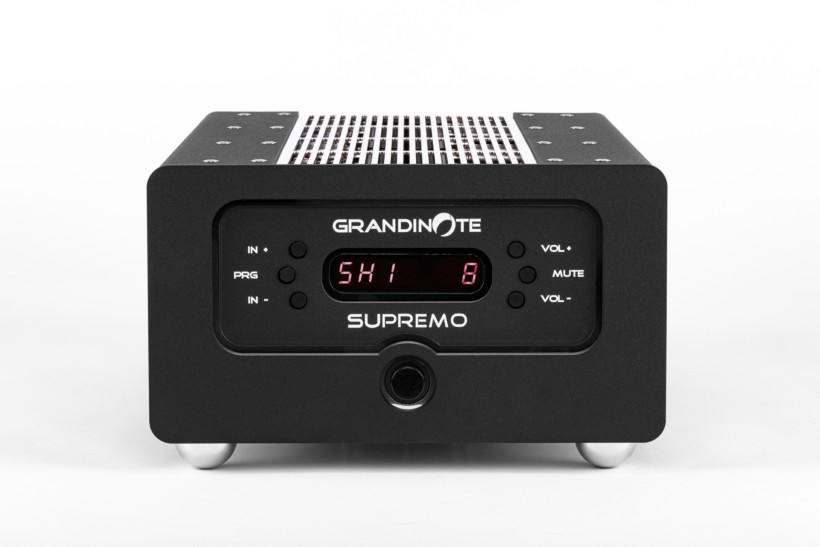
Already in 2000 Max „converted” to solid-state technology, at least technically. The designs he has been developing ever since still feature, which he emphasizes all the time, tube circuits with their simplicity and purity. He has just been replacing tubes in them with transistors. The result, as the GrandiNote amplifiers go, is a lineup full of Class A, no feedback, directly coupled, relatively (!) low output integrated and power amplifiers. Amplifiers that share a lot of the best qualities of top tube amps, but complement them with some key advantages of solid-state designs as well. Even the latest design named SOLO, which Max presented at High End Show in Munich this year, and that will be available later this year, opens, as it seems, a new era for GrandiNote in terms of both, internal and external design, is still a Class A, no feedback device. It just looks better, offers higher output, and a convenience stemming from a touchscreen operation.
The hallmark technology of GrandiNote is called Magnetosolid®. What is it? Those of you somehow unfamiliar with the brand and its achievements may ask. I let Max explain:
„Magnetosolid is the union of two words MAGNETO and SOLID. MAGNETO comes from ferromagnetic components, so the output transformers. SOLID is for solid-state components. The transformers are a consequence of our schematics inspired by the tube amps schematics.”
So apart from Class A, no feedback operation, direct coupling, and full dual-mono design, one more thing you should be aware of is that GrandiNote amplifiers use output transformers which is quite rare when it comes to solid-state designs. As you already know, these transformers are designed and made in-house by GrandiNote. While all Max Magri’s amps use this technology, both integrated and power amplifiers are divided into two groups. There are those that use „regular” GrandiNote transformers (regular is sort of an understatement here, as they are excellent!), ones featured in my trusted Shinai. There are also the more expensive models with so-called VHP (Very High Performance) transformers, which are ones of an even higher quality resulting in an even better performance. At least on paper, but one of the purposes of this review was to find out myself what exactly the VHP technology adds on top of the „standard” Magnetosolid® solution as Supremo, unlike Shinai, belongs to the upper echelon of GrandiNote products benefiting from VHP technology.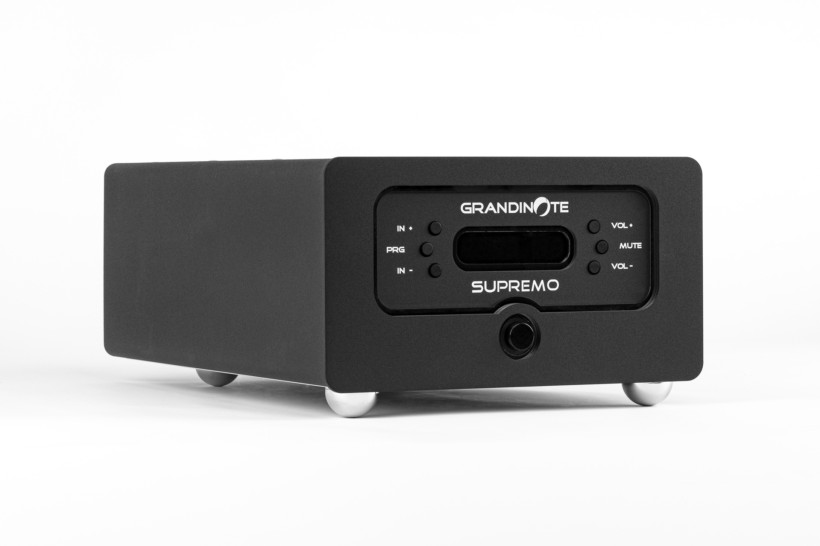
The latter is a result of Max’s continuous research. As you can read on his website:
„I decided to test a special material to produce the magnetic cores for the output transformers.
The cost of this special core is very, very high, but its performance is incredible:
with the identical wire geometry, with this core, the primary inductance is more than 10 times the ordinary core!
The damping factor is higher, the frequency response is bigger (in low and in high frequencies), the voices are more natural…”
It sounds promising, but even such a fan of Max Magri’s work as myself has to experience the difference to believe there is one as big as the manufacturer suggests.
Design and features
On the outside, and even on paper, Supremo and Shinai don’t really differ much. Both measure the same: 318 (W) x 196 (H) x 473 (D) mm and weigh the same whooping 40 kg. If you aren’t familiar with GrandiNote amplifiers please notice that the depth of the chassis is the largest dimension so you need quite a deep rack/stand/platform to fit it on. It also gets quite hot, so remember about space around the device for proper ventilation. If you look at the fronts the only difference to notice is the name of the model, otherwise they are identical. There is a display and six push buttons that allow you to adjust the volume, select an input, mute the outputs, and the last one, „PRG” (program perhaps) lets you enter the menu. In there one may select some more options including balance between channels, starting volume level for each input, and more.
A peak on the rear panel reveals the only variance visible to the naked eye – Supremo features four line inputs, the same as Shinai, but they are all balanced (XLR) ones, while Shinai offers two pairs of XLRs and two RCAs. Notice the setup of the inputs – ones for the left channel on one side and for the right one on the other. What’s different is the placement and order – connectors for the same input don’t sit next to each other. No. 1 for one channel is on top but for the other, it sits at the bottom of the column. Long story short, if you start to play music and there is no sound in one channel you should check your connections. One more essential piece of information – you have to pair Supremo with a truly balanced source! No RCA/XLR adapters will work. I mean, you will hear the sound but it will be heavily distorted.
One more thing that hasn’t changed is the need for two power cables – GrandiNote integrated amplifiers are actually two mono amplifiers squeezed into one chassis, hence the need for two power chords. The single speakers output connects are different than in my Shinai but the latter is several years old so maybe Max has changed the connectors for all amplifiers, or used ones of higher quality for Supremo, I am not sure. The whole chassis rests on the same metal feet with a rounded lower end which significantly limits the contact area hence vibration transmission. Even the remote control, a small, handy metal unit that allows you to adjust volume, mute the outputs, and select inputs, is exactly the same for both Italian integrated. To be clear – it is not a complaint on my side, it is a smart move on the manufacturer’s side, as they save some money using the same components in various models, investing where it really matters, which is in sound quality.
On paper, at least in terms of technical specifications, the differences are almost negligible too. The same output of 37W per channel in Class A, a wider frequency response but even the one of Shinai is impressive, and the one parameter that may matter, at least with some speakers, that is higher for Supremo is the damping factor. The latter was increased from >150 to >230. For many if not most GrandiNote speakers, that are quite easy to drive, the higher damping factor won’t matter much, but in some cases of more difficult-to-drive ones, it could make a difference even with the same output.
I am not the one who impatiently peaks under the hood of a tested device to study the design and find the exact differences between models. Considering the weight, the fact that the hood is fixed with several screws, some of them underneath, I didn’t look inside. So let me relay on what Max revealed regarding the differences between Shinai and Supremo. One key difference has already been mentioned – VHP output transformers. Supremo is one of the models that feature these higher-quality components which are also used in another model named Essenza.
The latter sits between Shinai and Supremo in the lineup, so it is the middle model of one-box integrated amps (not counting SOLO yet). I emphasize the one-box concept as Max offers also two-box integrated amplifiers… That’s a story for another time though. While Supremo shares VHP output transformers with Essenza it features a different, more advanced preamplifier stage. The output stage, apart from transformers, is exactly the same in all three amplifiers. So do better output transformers and preamplifier stages translate into a better performance compared to Shinai? Let’s find out.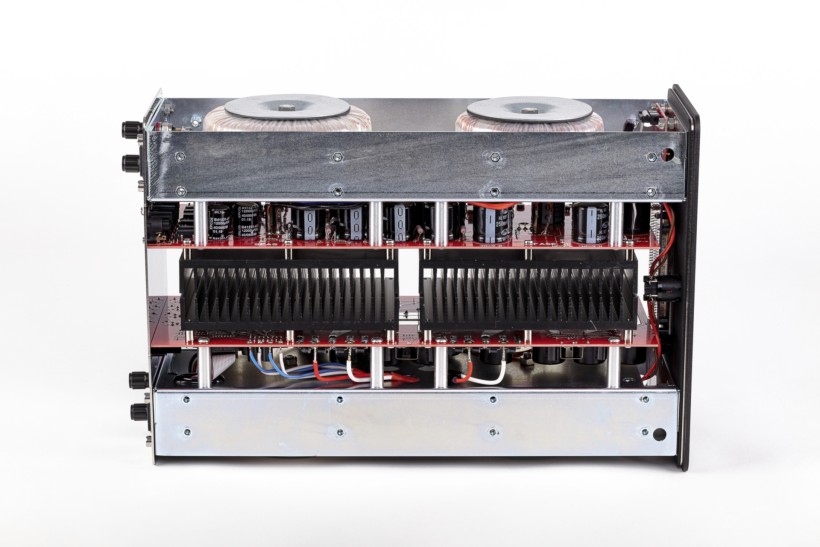
Sound
I have mentioned it many times before – I love my Shinai amplifier. I love my 300B SET too, and, interestingly, I love these two for mostly the same reasons. I mean, there is one key factor and similarity – sound. So when Max Magri says, that he offers solid-state designs built and sounding like tube counterparts it is not just marketing, it is true! And it comes from a man who is hopelessly in love with tube SETs so it should have some weight to it. Obviously, I don’t claim that both, my 300B SET and Shinai sound identical. I do say that they both share enough similarities to have much more in common than almost any other non-pure-tube design I know. And that they share what matters most, which makes Shinai a valid option for any SET lover who, for whatever reason, wants or needs to use an s-s amp instead of a tube one, for example, to drive more demanding speakers. Because my experience with this amp is that it can drive almost any speakers in my room. Admittedly, the room isn’t big (24 sqm, over 3m high), and I listen to music at reasonable levels. Yet, among all the speakers I tested over the last few years only once or twice, I had to reach for a more powerful amplifier.
So I really wonder what will Supremo do against Shinai. The very first album I cue in is the famous „Friday Night in San Francisco”. I am listening to it as a sort of preparation for the Al di Meola’s concert here in Warsaw that will take place in the evening on the very same day. I already know that the 45 r.p.m. release by IMPEX is outstanding and Supremo confirms it right from the start. Let me add, that the fantastic Doshi Audio Evolution Phono Preamplifier plays its role too. The intensity and incredible energy of the performance, all the intricate details, the speed, and the deep, natural, palpable sound of the guitars, all combine into a breathtaking experience.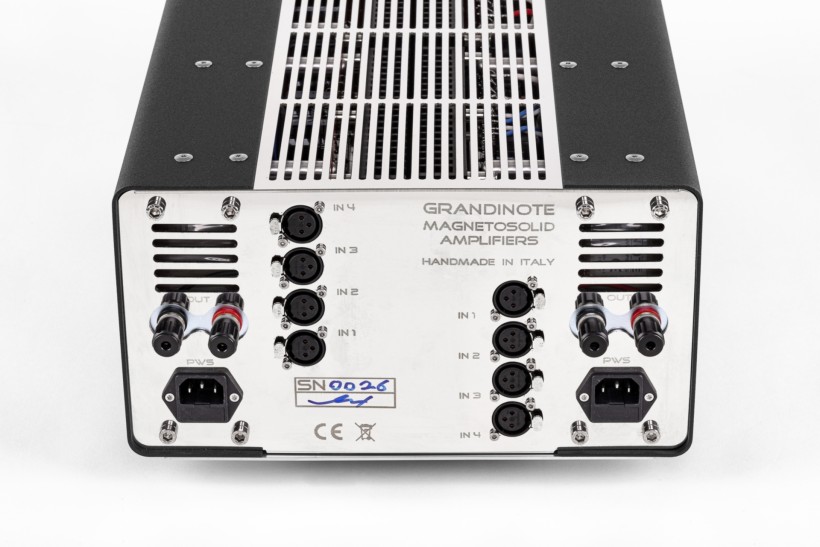
Is it better than with Shinai? Yes, the difference is not of a day and night kind, it is sort of subtle but it’s there, it’s meaningful. Switching back to my amp I can hear that the whole presentation is not quite as lively, not as intense, that the definition of sound sources (guitars in this case) is very good, but not on par with Supremo’s, that the latter is more precise without been over-analytical. Don’t get me wrong – with Shinai Al, Paco, and John sound fantastic, but with Supremo the impression of witnessing the performance in all its glory, with all the energy and emotions that arise during live performances, simply reaches an even higher level. It’s even more of an experience, as opposed to just listening to the recorded music, and I love it!
The piano on Tsuyoshi Yamamoto’s „Midnight Sugar” (45 r.p.m. re-issue from Cisco) hits me with all its power and weight. It is recorded very closely so the intensity and energy of every keystroke is incredible, even more so with Supremo. Also, every keystroke is more precisely defined, particularly the attack phase, as both amps beautifully present the sustain and decay phases without ever shortening the latter. The bass, while a bit soft, in a natural way I mean, is very deep, tuneful, impactful, and it extends really low. Its whole range including the lowest notes, is saturated with energy. There is no doubt it is a huge, heavy instrument that asserts its authority in the recording being sort of a counterweight of the bit „aggressive” Yamamoto’s piano. The gentle shimmering of very crisp and vibrant cymbals beautifully complements the band and proves high resolution of treble perfectly matching the rest of the range. The whole presentation is very coherent and fluid and even though it is condensed into a small space/soundstage, the separation of instruments is exemplary allowing me to study any of them any time I want.
Unfortunately, the time has come to part ways with Doshi Audio phonostage. None of my own sources is a balanced design so I have to use a loaner from a friendly distributor. The idea is to use something that I am already familiar with, so I end up with one of my favorite DACs, Brinkmann Nyquist Mk II. It is fed the signal from my server via David Laboga Custom Audio Expression Emerald Mk II USB cable. One of the first albums I listen to with it is Kitaro’s „Kojiki”. It’s majestic, electronic combined with orchestral music with low, powerful bass. Supremo provides on all fronts. The bass is truly visceral, and very well controlled, and the treble, both electronic and acoustic, is crisp and sweet at the same time. The Italian amplifier perfectly presented the complex structure of the recording while focusing my attention on the beautifully told folklore story of the rise of Japan and its people.
After this experience, I have to reach for Beethoven’s 9th another complex orchestral performance rich with changes of pace and a wide dynamic range. GrandiNote Supremo presents its superb resolution, transparency, and clarity delivering a staggering performance of Wiener Philharmonic Orchestra conducted by Böhm in a crystal clear, precise, spirited way. I know from a discussion with a renowned conductor that this version is played at a bit faster pace than it should be but maybe that’s why I like it so much. The way it is played and faithfully conveyed by Supremo encourages me to push the volume up and up, yet it doesn’t change a thing in terms of clarity of the presentation and perfect control over speakers. Also, much louder delivery than the one I am used to doesn’t cause a headache, at least not for me – I don’t know about neighbors.
There is not a hint of losing control, distortion of any kind, or any negative impact of playing much louder – it just enhances the experience, making it even more real. There is no way I am going to shorten it, I am listening to the whole album with a smile on my face sitting at the edge of my sit excited as if I listened to it for the first time. Again, is it better with Supremo than with Shinai? Yes, it is more real. It seems that the complexity of the recording is reproduced a touch better with a better insight into the deepest layers of music. The clarity of the treble is better and yet there is no hint of harshness or aggressiveness. In other words, with Shinai the upper part of the range is a bit sweeter, which is nice, more relaxing perhaps, but also less truthful to the recording. It’s as if Shinai added very little from itself to make it sound more listener-friendly, while Supremo delivered the truth, the whole truth, and nothing but the truth. Importantly, still in a very natural way.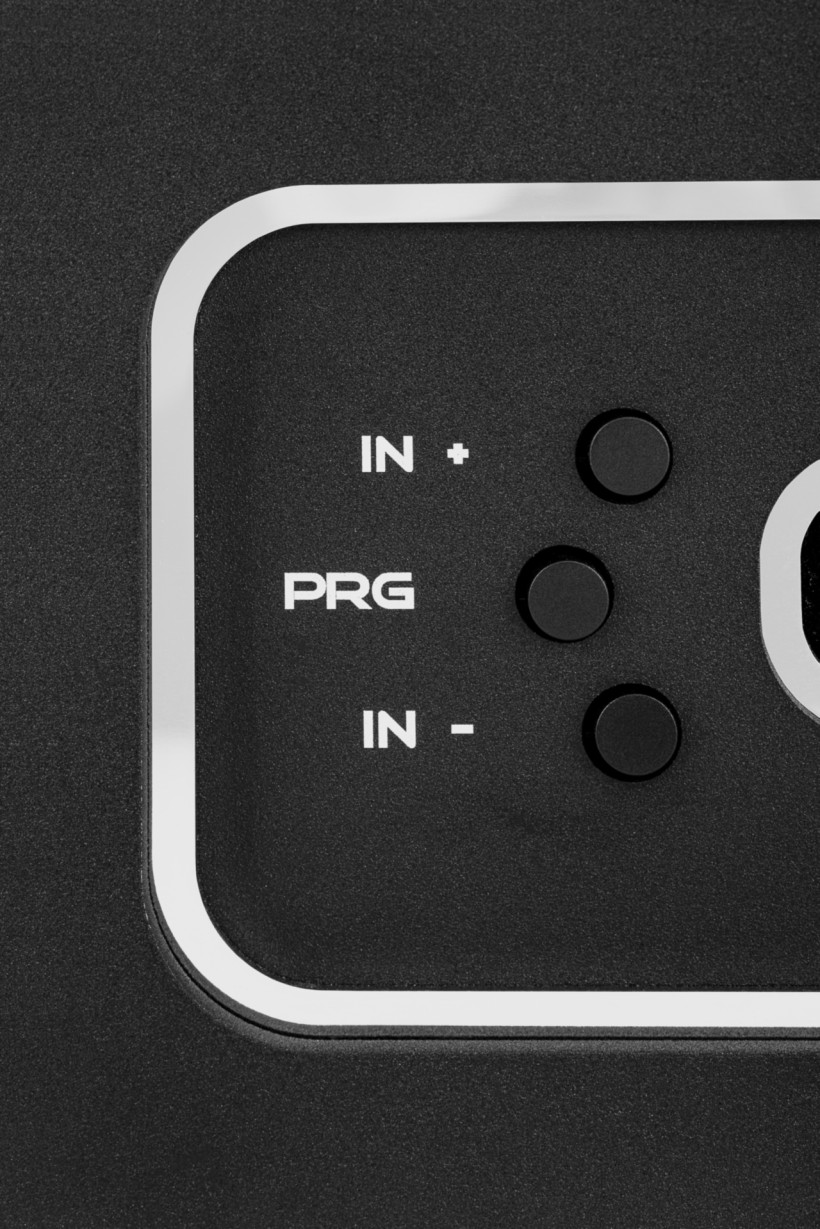
Back to acoustic music with Felice Del Gaudo, an Italian bass player, and his album titled „Desert”. In some ways, it reminds me of one of my favorites, „Spirit of Nadir” by Oleś Brothers. It is also well-recorded, the sound of double bass is powerful and pure, rich and vibrant, with Supremo the balance between strings and wood is perfect. On „Spirit of Nadir” which I play right after „Desert” the impression of a huge space surrounding musicians (despite the fact it is a studio recording) is more intense, but the sound on the latter is as open, as filled with air as on the former. The sound of acoustic instruments in both cases is incredibly natural, the music flows effortlessly completely detached from speakers, and it fills the whole room. The experience once again is beautifully immersive, and absorbing, it pulls me into the world created by musicians, and it is a beautiful, intriguing world.
Summary
Funny enough, for most of the shows I went to, Max chose Shinai over his more expensive, supposedly better-sounding components. Why? I guess, taking two-box solutions is less practical, but Supremo shares dimensions and weight with Shinai so these factors are definitely not obstacles. Maybe, just maybe, Max simply likes Shinai most among his designs. He wouldn’t be the first who personally prefers not the most expensive and objectively best of his designs, but another one that just pushes all the right buttons in him (TO BE CLEAR – that’s my assumption, not something I know from Max). I felt the same with Kondo Souga, for example. I recognized that objectively Kagura mono amplifiers sounded even better, but if I could afford it I would buy Souga as for me personally it delivered the most touching, most immersive musical experience I’d ever heard.
The story with Shinai and Supremo is a bit different. It is similar in that the less expensive integrated sounds a bit sweeter, more romantic, more tube-like delivering the most beautiful side of music. It is different because having a choice I would pick Supremo over Shinai because it is a better amplifier. It is even more resolving, precise, transparent, and more revealing. There is a little extra clarity and transparency in its sound, and it delivers even more visceral low tones, that with most speakers will be perfectly controlled, and tight. Yet, there is still a hint of tube-like sound there. The midrange is rich, saturated, and palpable (not as much as with Shinai, let alone 300B SET, but still), and the acoustic music and vocals sound great, engaging with it. It builds a convincing three-dimensional soundstage shown from a somewhat greater distance than with Shinai. It played orchestral, rock, and electronic music with the same intensity and energy delivering equally immersive, thrilling, powerful performances. After all, it is a full-blooded, high-end, versatile integrated amplifier capable of making highly demanding audiophiles’ and music lovers’ dreams come true. Great job Max!
Prices (when reviewed):
- GrandiNote SUPREMO: 24000.00 EUR
Manufacturer: GRANDI NOTE
Distributor: AUDIO ATELIER
Technical specifications (according to the manufacturer):
- Stereo integrated amplifier with Magnetosolid-VHP
- Output per channel: 37W in Class A
- Damping factor >230
- Frequency response 1,5Hz – 350 kHz
- Four balanced inputs XLR (full-balanced)
- Direct coupling stages: no capacitor used
- Full dual-mono, no feedback design
- Power consumption: 270W
- Weight 40kg
- Dimensions: (W) 318 x (H) 196 x (L) 473 [mm]
Associated equipment:
- Digital source: a custom passive server with WIN10, Roon, Fidelizer Pro 7.10, JCAT NET XE, and JCAT USB XE cards with FERRUM HYPSOS Signature power supply, KECES P8 (mono) linear power supply for the server, JCAT USB Isolator
- D/A Converter: LampizatOr Pacific 2 +Ideon Audio 3R Master Time (USB signal regenerator)
- Analog front end: J.Sikora Standard MAX turntable, J.Sikora KV12 tonearm, J.Sikora KV12 MAX tonearm, AirTight PC-3, phono stages: Grandinote Celio MK IV, ESE Lab Nibiru V 5.
- Power amplifiers: GrandiNote Shinai, Circle Labs M200, Art Audio Symphony II (modified)
- Preamplifier: Circle Labs P300
- Loudspeakers: GrandiNote MACH4, Ubiq Audio Model ONE Duelund Edition.
- Interconnects: Bastanis Imperial x2, Soyaton Benchmark, Hijiri Million, Hijiri HCI-20, KBL Sound Himalaya II XLR, David Laboga Expression Emerald USB, David Laboga Digital Sound Wave Sapphire Ethernet
- Speaker cables: Soyaton Benchmark
- Power cables: LessLoss DFPC Signature, Gigawatt LC-3
- Power: Gigawatt PF-2 MK2 and Gigawatt PC-3 SE Evo+; a custom power line with Gigawatt LC-Y in-wall cable; Gigawatt G-044 Schuko and Furutech FT-SWS-D (R)
- Network: Silent Angel Bonn N8 + Silent Angel Forester F1 + optical LAN isolator
- Racks: Base VI, Rogoz Audio 3RP3/BBS
- Anti-vibration accessories: ROGOZ-AUDIO SMO40 and CPPB16 platforms and ROGOZ AUDIO BW40MKII feet, Franc Accessories Ceramic Disc Slim Feet and Wood Block Platform, Graphite Audio CIS-35 and IC-35


